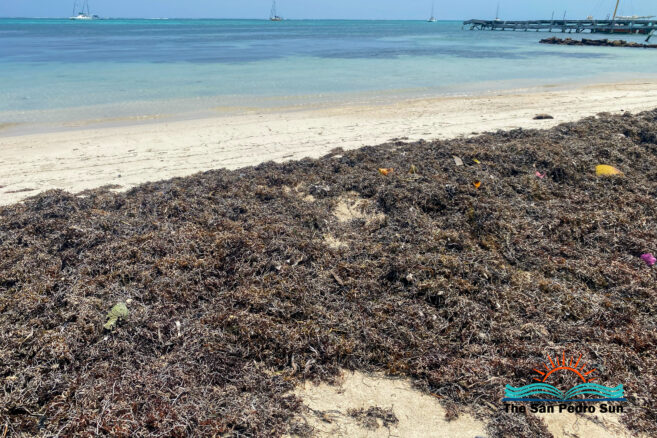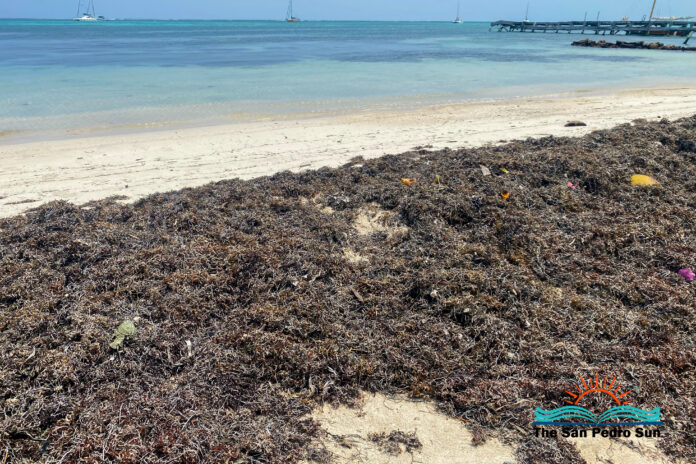As the days get warmer and east winds pick up, the arrival of the sargassum seaweed is already making its presence along the coast of San Pedro, Ambergris Caye. While island authorities are yet to announce a plan to address the expected excessive seaweed beaching, recent reports suggest that monitoring efforts observe large Sargassum patches in the Caribbean Sea drifting in a western motion.

In January, the University of South Florida Optical Oceanography Laboratory report detected roughly 5.5 million metric tons of sargassum in the central Atlantic Ocean. The report noted that there has been a slight increase since December 2023. Researchers say sargassum growth will continue as the main bloom in the Atlantic Ocean expands and drifts off to the west Caribbean.
Over the past few years, sargassum has put a dent in the tourism industry in Belize and even affected the fishing industry. The San Pedro Town Council is currently looking at ways to tackle the seaweed issue and says they are monitoring the situation. In the meantime, they deploy crews to the beaches in the downtown area to keep beaches sargassum free for locals and tourists to enjoy. However, the brown algae influx continues to increase daily.
Sargassum is a natural phenomenon believed to be altered by human influence and climate change. Belize has struggled to tackle it with limited resources. The environmental crisis has been growing since 2014 and is now a yearly occurrence in the Caribbean region. The issue is not the massive beaching but the danger the seaweed poses when it decomposes. It releases toxic gases, such as hydrogen sulfide and ammonia, both pollutants to the air and water. These gases can cause respiratory problems and allergic reactions to beachgoers.
Stakeholders in Ambergris Caye are also doing their part. Many large hotels outside of downtown employ personnel to keep their beach areas clean for their customers. Some have even invested in equipment to remove seaweed from their seafront properties. However, it is not enough, as this seasonal invasion has contributed to significant economic consequences for the tourism industry in Belize and the Caribbean region.
There is no definite solution to this problem so far. However, the SPTC will continue monitoring the natural phenomenon and work on a collective plan to overcome the Sargassum threat this year.


